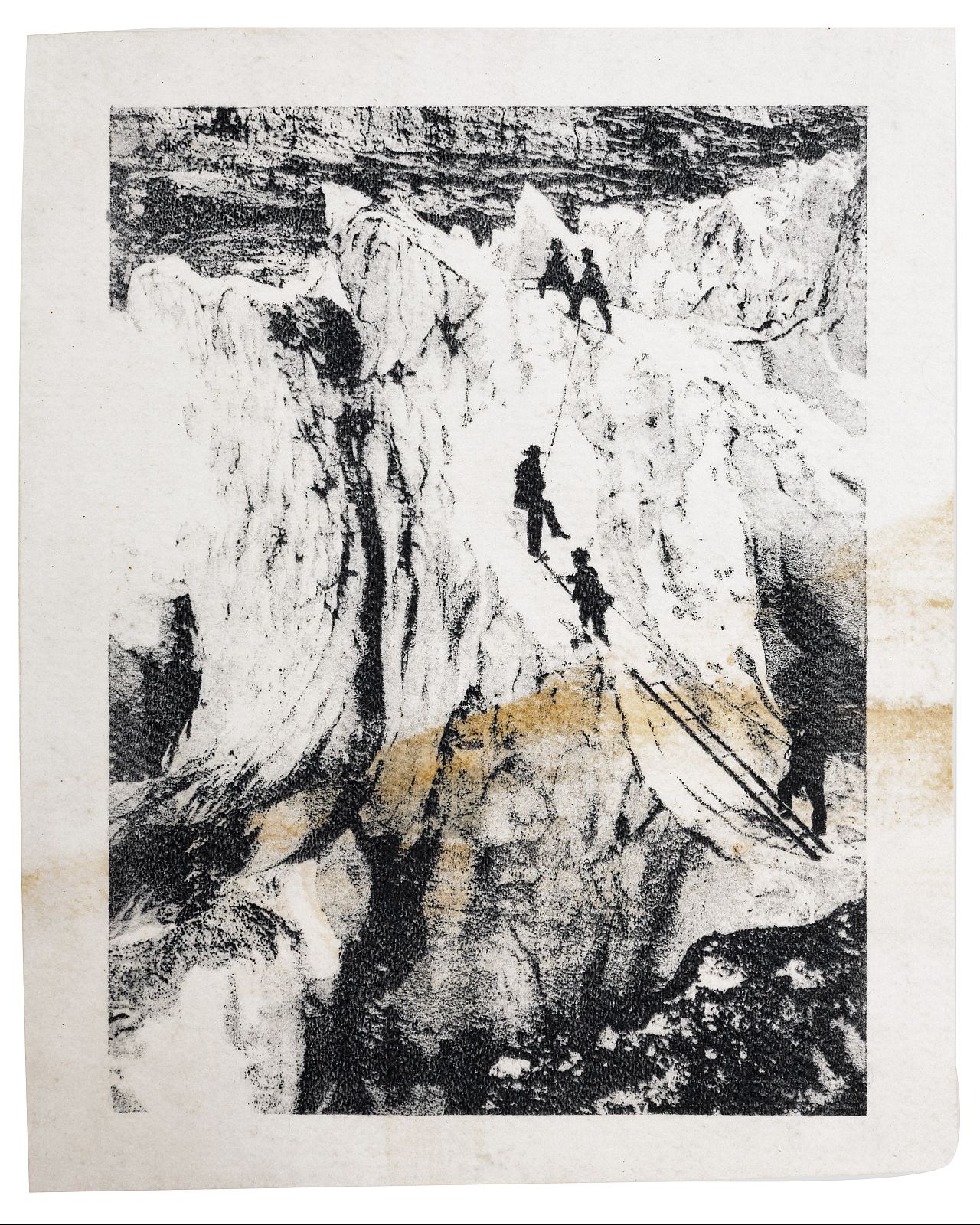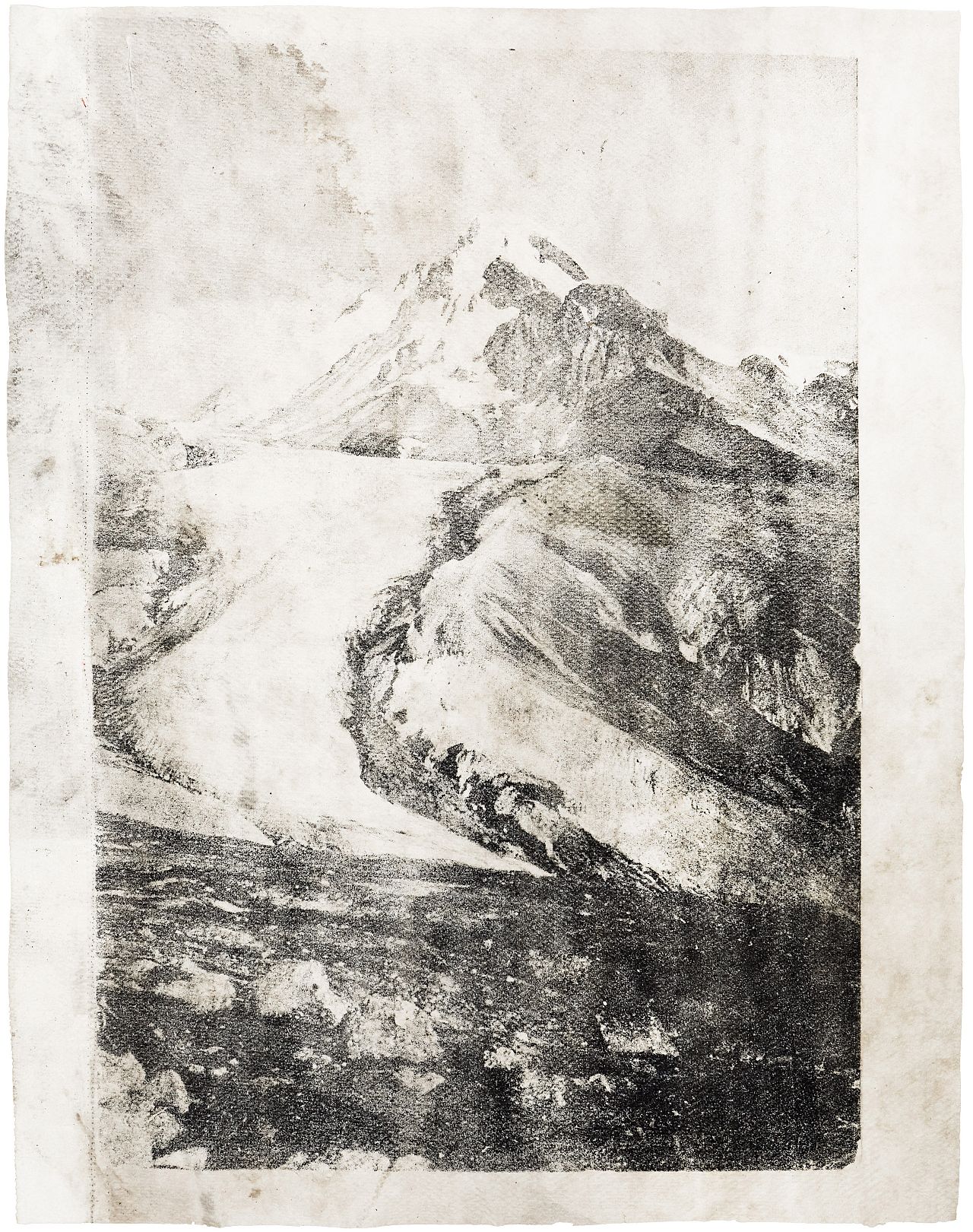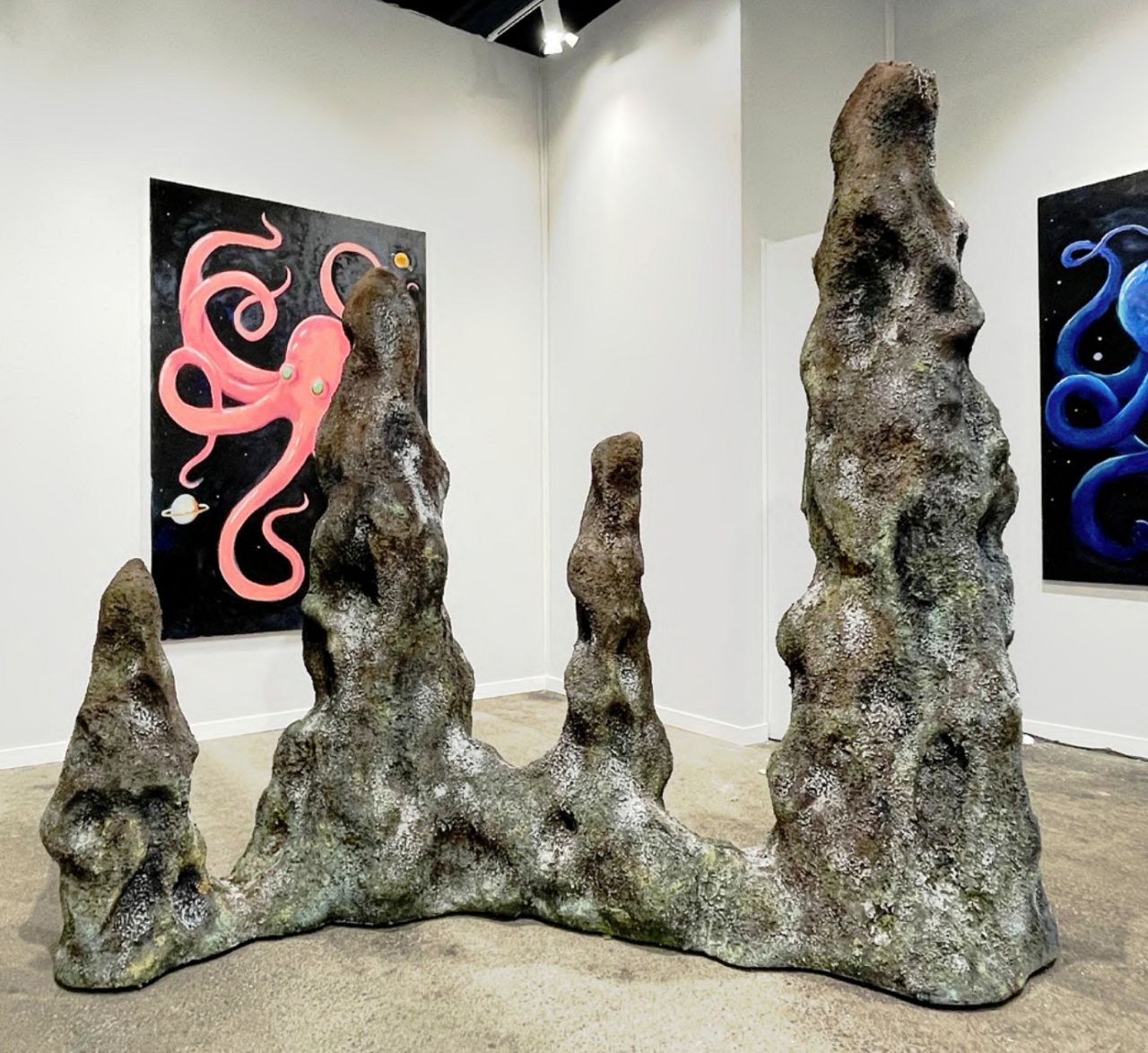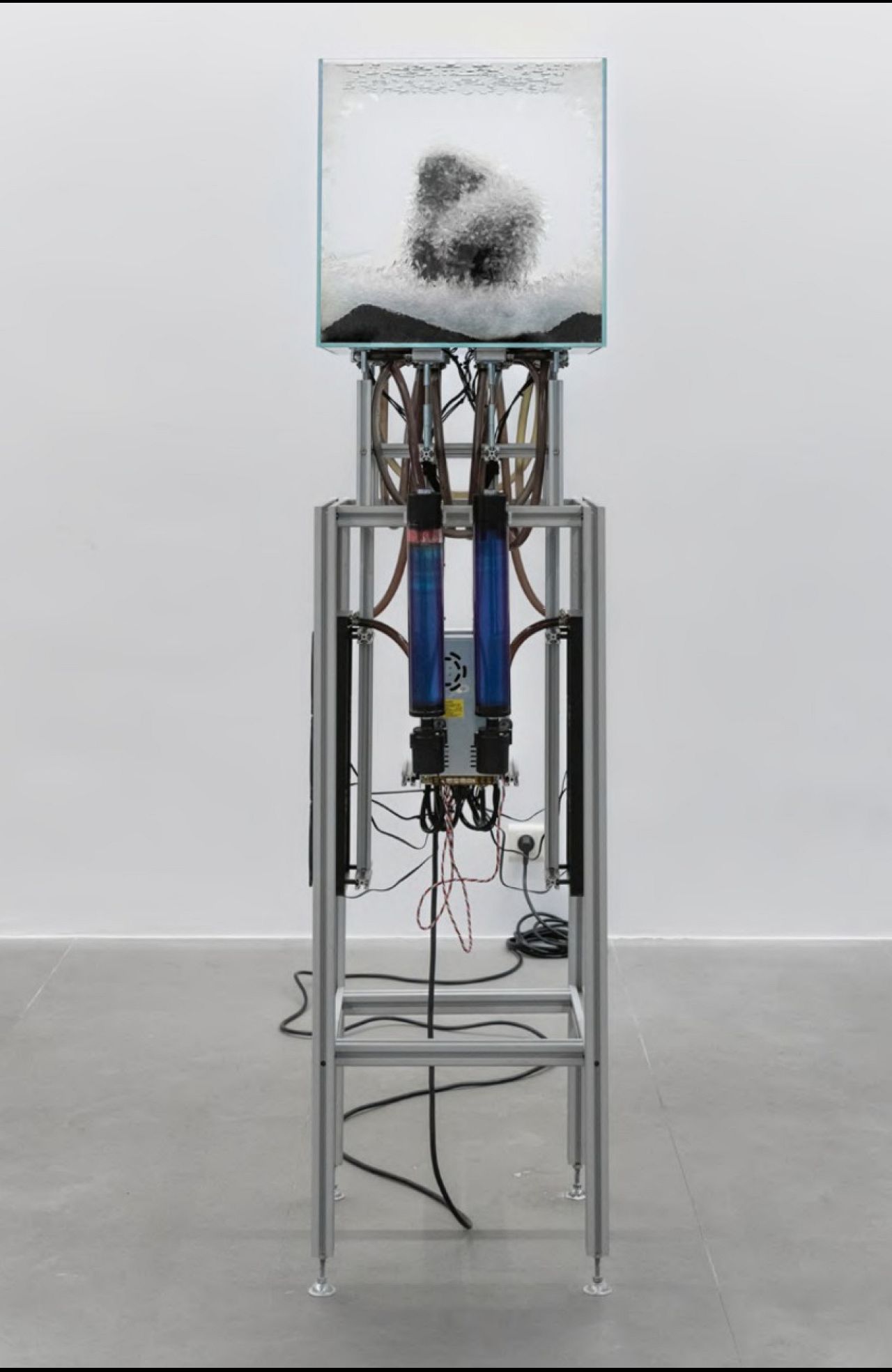From the Sublime to the Pink Octopus; young artists breathing fresh air into nature-focused art.
The beautifully placed and brightly lit halls of the French capital's Grand Palais Éphémère are once again hosting one of the highlights of the contemporary art year.
Art Paris is back, only a short hiatus from its last incarnation back in September 2021.
Opening to the public on Thursday morning, this edition brings a focus on the natural world and how art relates to and reflects the environment.
Guest curating the 'Natural History' section of the fair, Alfred Pacquement says the aim is "exploring, observing and taking stock of nature, noting how it is transformed or endangered and showcasing it, recounting its every aspect."
Fitting then that I should discover a young artist whose thought-provoking and original works cleverly and magically start a conversation about climate change, specifically glacial reduction.
Born in Zurich in 1989, Mandry marries subject and materials with great innovation. The late 19th/early 20th century photographs on which he bases his work were taken during photography's teenage years, when heavy and expensive box cameras were lugged, ceremoniously one imagines, halfway up a mountain to record a group's exploits in Alpinism.
The mountainsides will not look quite like they did over a century ago now. Indeed here in the 21st century, resorts across mountain ranges use a particular method to attempt to slow the glacial shrinkage caused by climate change.
A time-consuming task that can take weeks to carry out, workers cover parts of the glacier with a protective polyester fleece, which helps stave off summer melting and preserve more of the snow that fell in the previous winter.
It is this precise material that Mandry uses as the canvas for his lithographic prints of the archive photographs.
Notice here the band of colour that sits across the lower third. This is pigment from the earth from when this area of fabric was used as a Glacier protector.
"The idea of disappearance is present in the fact that I use vintage Alpine photographs and glacial documentations from the beginning of the last century," Mandry tells Euronews Culture. "There's about a hundred years between those two elements - the photograph and the textile - which allows us to reflect on the idea of time. It no longer looks like this today."
For Mandry, this choice of focus from the Art Paris curators has given him a very substantial platform.
"I'm very happy to have been selected by (exhibitor curator and environmental specialist) Alice Audouin to show this work. There should be a strong interest in environmental art in today's society," Mandry adds.
From the Sublime to the Pink Octopus
Born in Lyon only one year earlier than Mandry, Hugo Deverchère has his head far loftier than the summit of Europe's mountain ranges. His vision appears to see the natural world in both a pre-historic and futuristic sense.
Life is not just human life, his work screams out. This is nature without us because nature is not only us.
There's a sci-fi edge to Deverchère's oeuvre, and it's highly conscious. Rigged-up in Galerie Dumonteil is a contraption he has titled 'Artefact #05'.
He uses a rock that looks very much like a meteorite and the water in the tank crystallises, kept cold by a saline solution that he has coloured. This could be two million years in the past or two million years in future. It is so natural. Rock and water. Where will we be when the Earth is like this once more?
Deverchère takes us to a place where the natural world is all there is.
The planet-dwarfing tentacles of multi-coloured octopuses remind us that these intelligent Cephalopods were around before the dinosaurs and lead us to the sort of awareness of nature's enormity that early Alpinists associated with the sheer scale of a mountain range. An awareness of the sublime.
These two young, visionary artists perfectly encapsulate the mission of this year's Art Paris. A fair that never fails to amaze.
Art Paris runs until Sunday 10 April.















